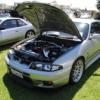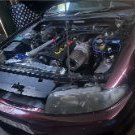Announcements
-
Similar Content
-
Latest Posts
-
Hey all. Had a bit of a scare today with my R34 GTT when i flicked on the tail/parker lights, and some wiring started going up in smoke under the dash. The fuse didnt blow, it just melted the casing of the fuse so must have been a crap fuse? Previous owner did alot of wiring, some of which is quite sub par and the fuse that melted was definitely newer than the other ones that were in the fuse box, but didnt seem that he touched the wires that mainly got melted. Anyway may need a small section of a new loom, is there lots of similarities between the turbo and non turbo looms especially for under the dash stuff? The wired that got friend go into a 6 pin relay under the dash. The non turbo ones are less than half the price here from a wrecker and all i would need it the section that got fried and any other wires that are affected. Thanks in advance
-
Nice, they are pretty common mods in the US. Have been considering sway bars for my Q50 Hybrid. Given it is AWD, I don't really have any wheel hop issues on hard launches, so I am not sure the diff brace would help as much as it did for you. I'm surprised the diff brace made any difference to shift feel, since it doesn't impact the auto transmission in any way, if anything I would have expected to feel shifts even more as there is less 'give' in the diff mountings to soak up the shift shock. Are you sure this one isn't placebo?
-
Calling it a dam will probably have the local government charging him for the water that it captures
-
Duncan just needs to start an epic open pit mine, let it store the excess water for him. Call it a dam and the authorities won't say a word








Recommended Posts
Create an account or sign in to comment
You need to be a member in order to leave a comment
Create an account
Sign up for a new account in our community. It's easy!
Register a new accountSign in
Already have an account? Sign in here.
Sign In Now